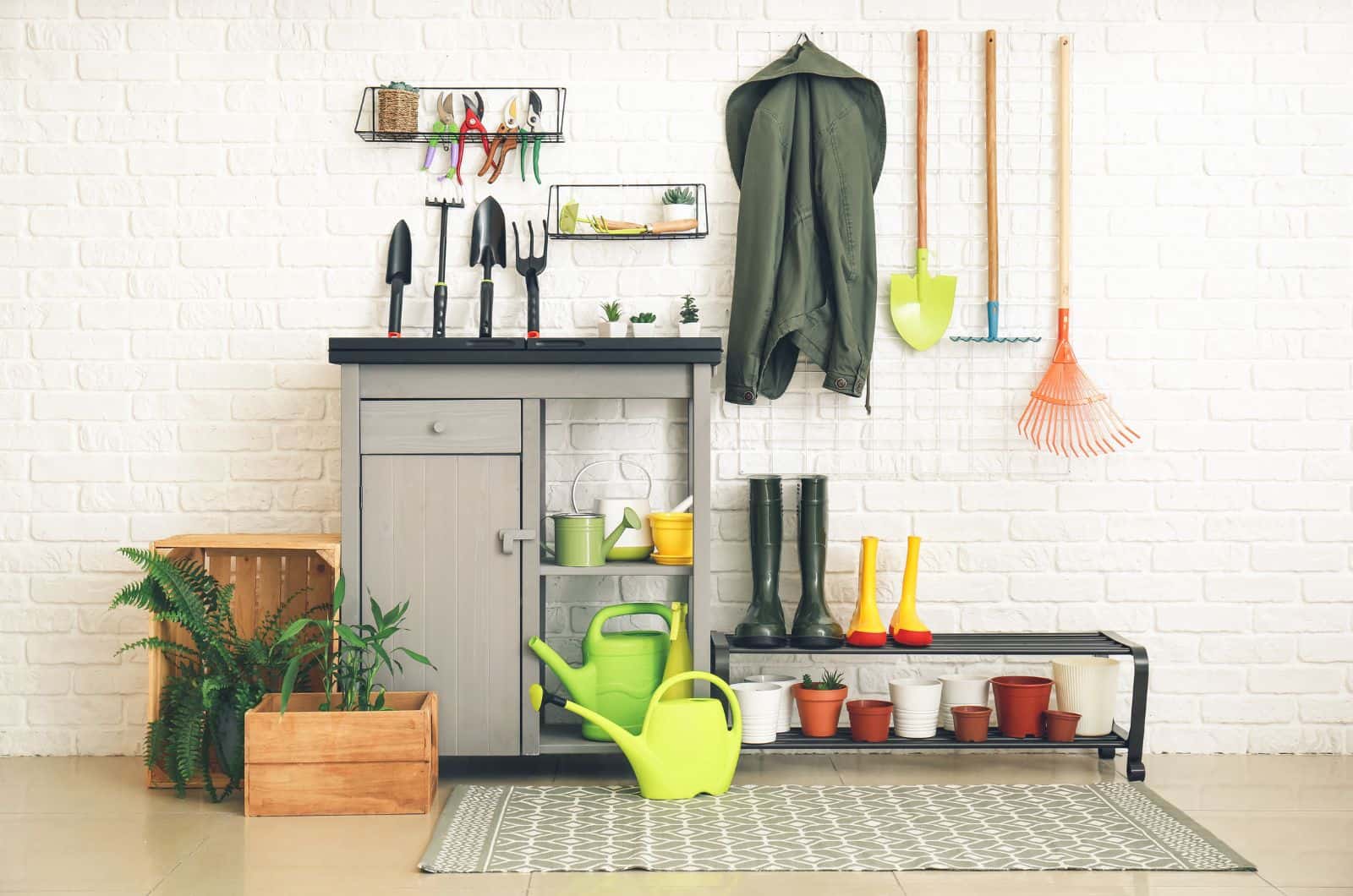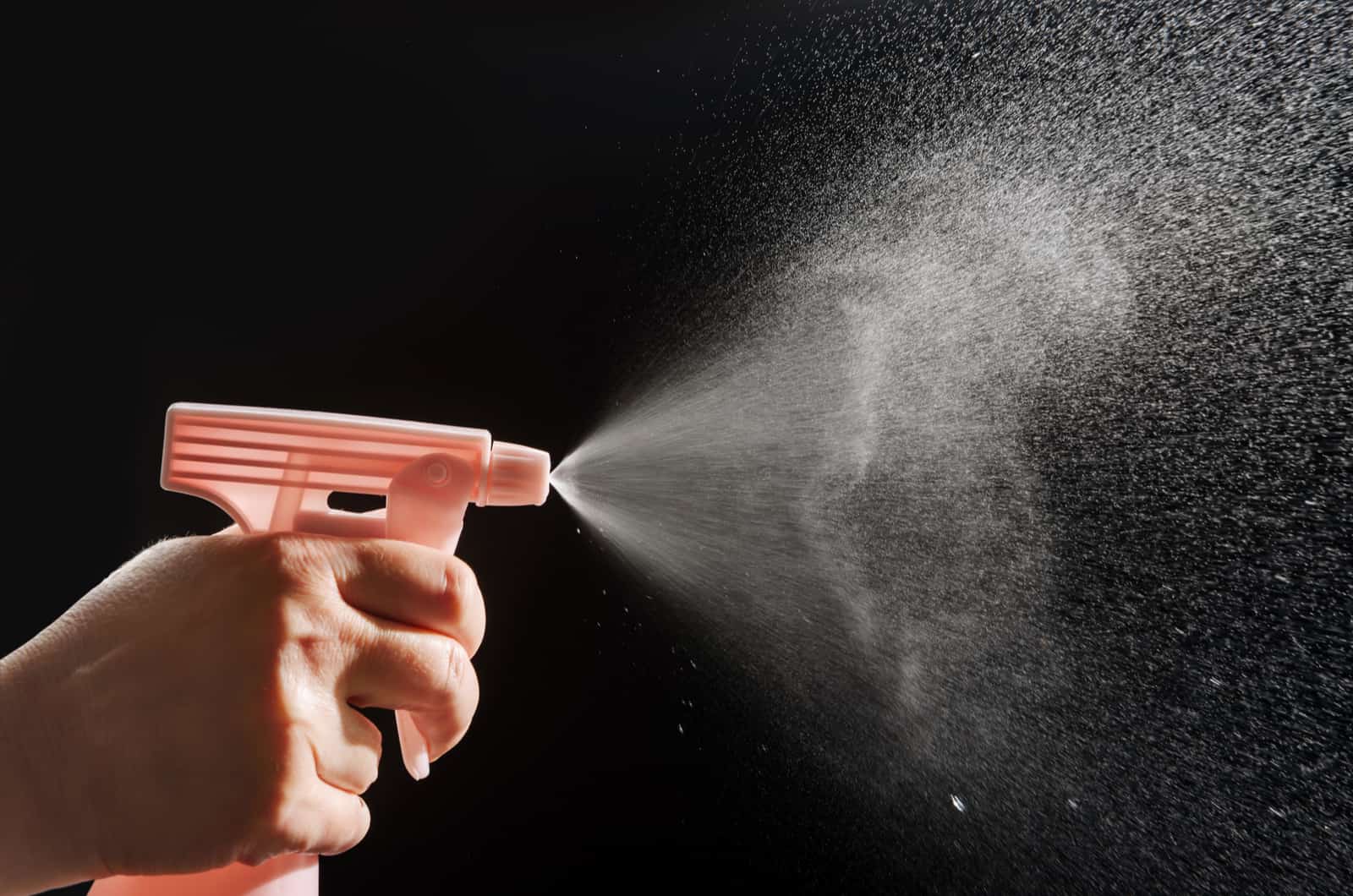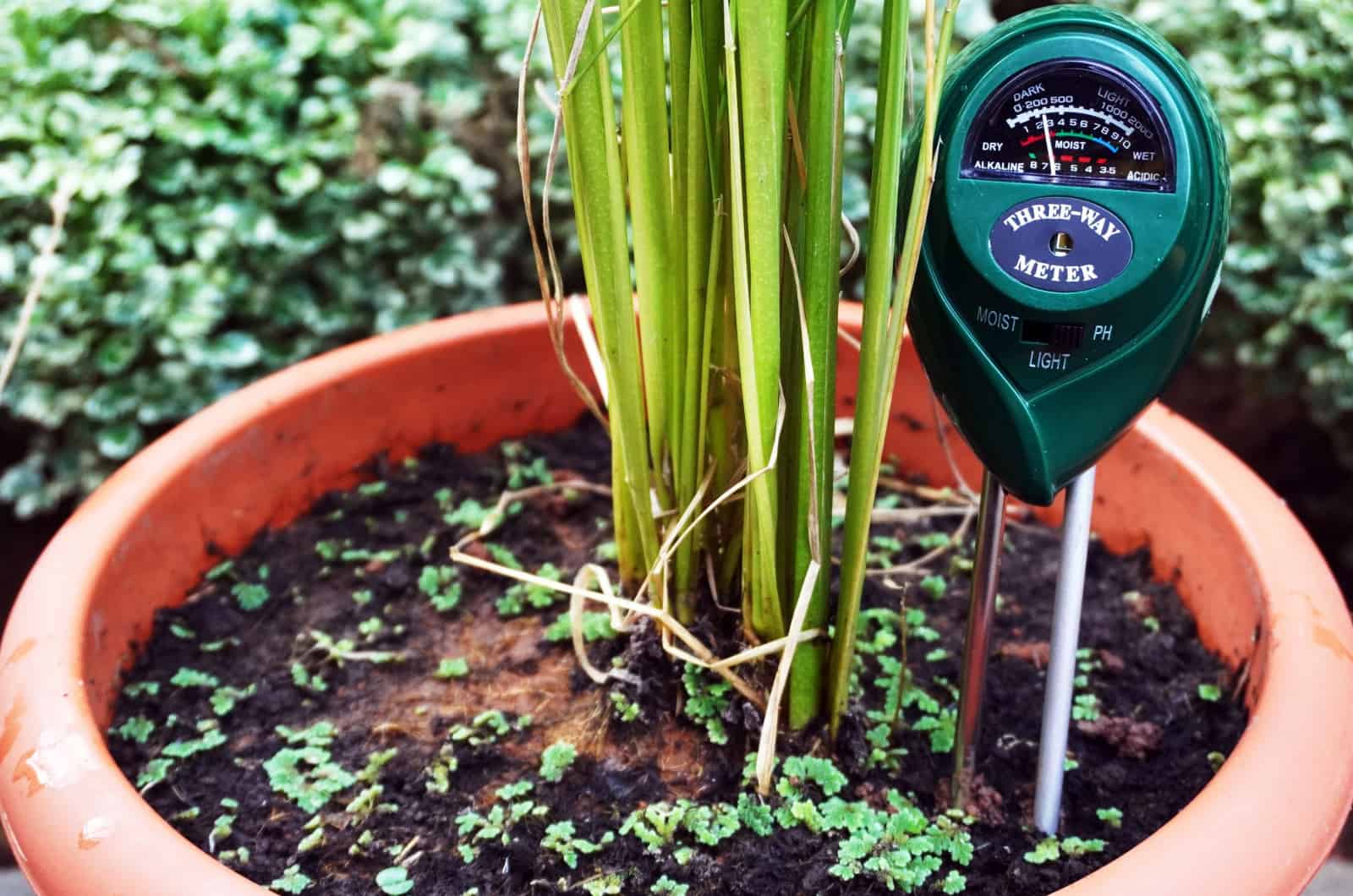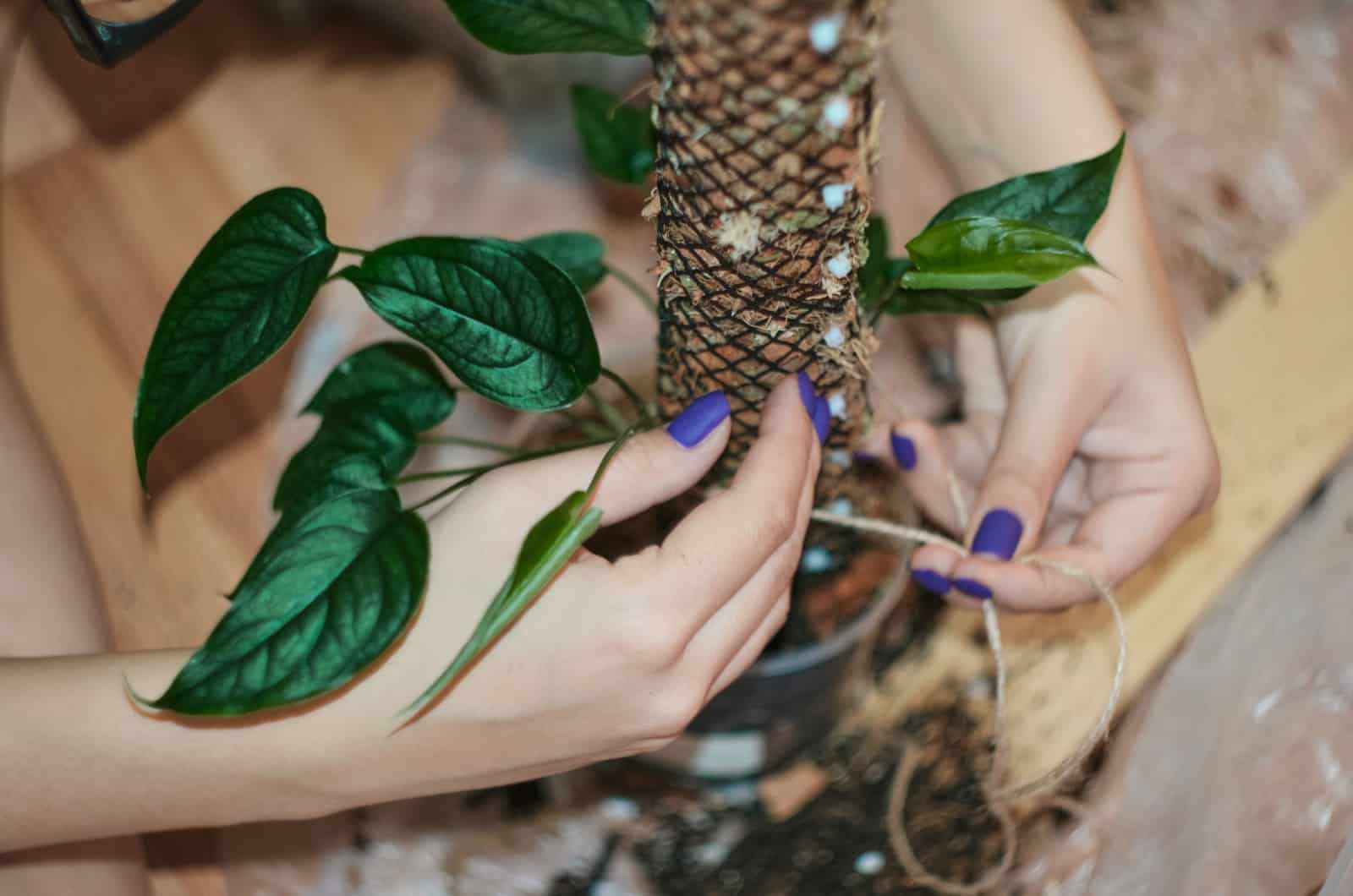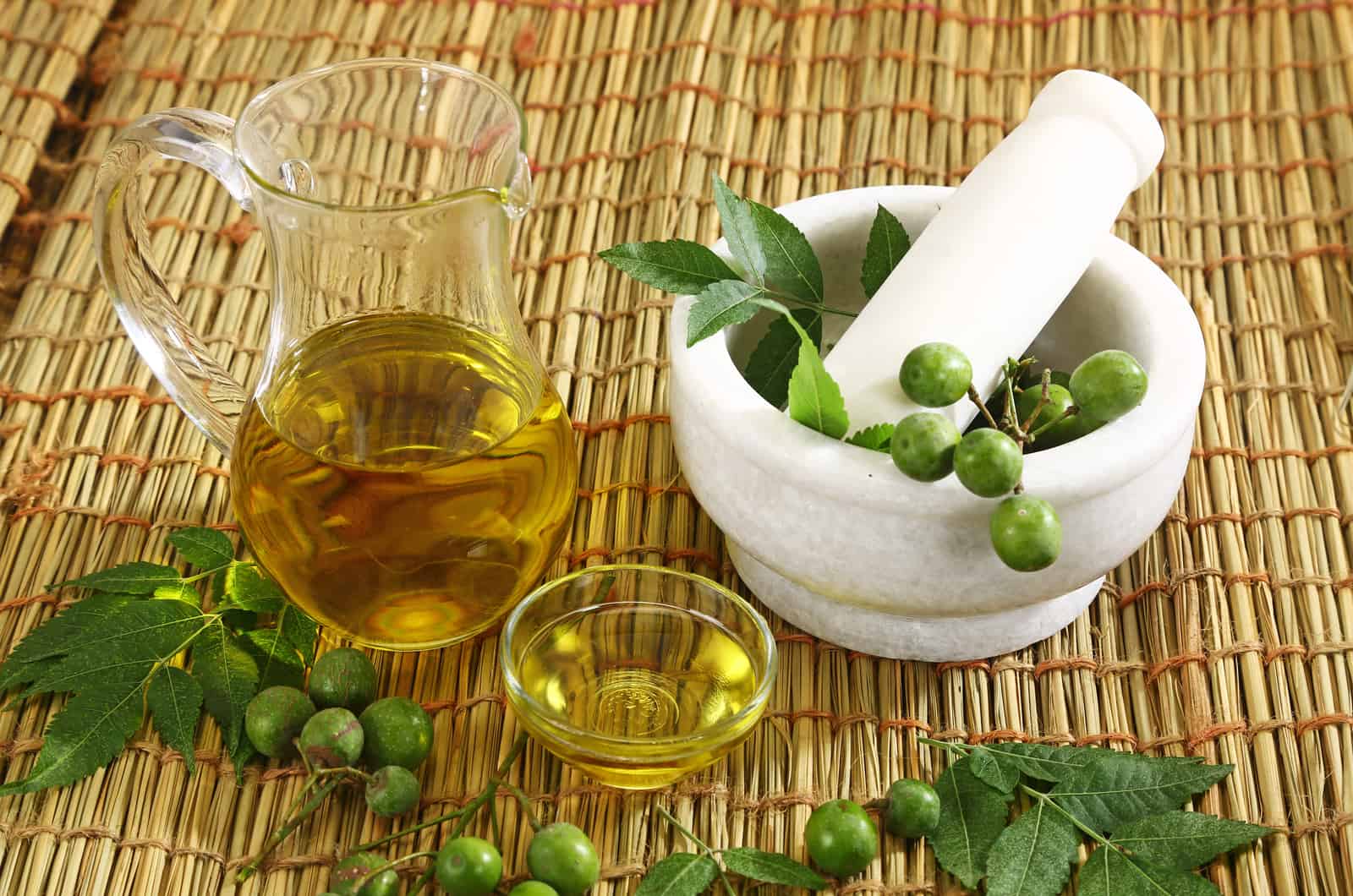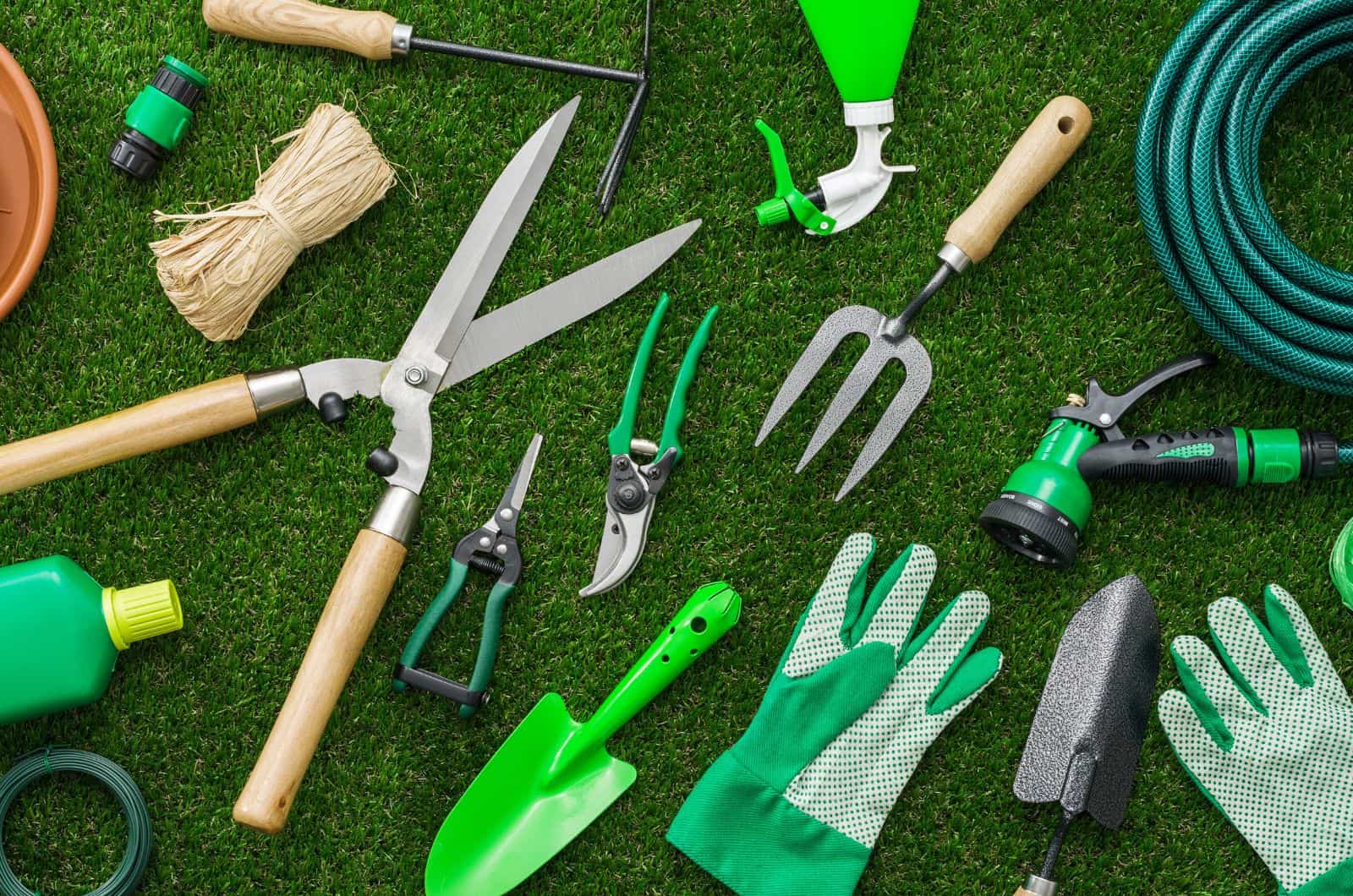When I started growing houseplants, I didn’t know there were so many tools! All I had at the time were a watering can and a plant I recently bought.
Luckily, I had gardener friends who told me more about all the essentials. After many years of indoor gardening, I have a pretty extensive tool collection. Believe it or not, every tool is much needed and useful.
I made a list of important houseplant tools that every gardener should have. Each of the tools on the list has a purpose, so all beginners should get them to help with their gardening.
Many people think gardening is expensive and that you need to spend a lot of money on plants and tools.
But that’s not even close to the truth. Almost all the tools on this list are affordable and long-lasting, so that shouldn’t be an excuse for not gardening!
Let’s find out what you need to prepare before entering the indoor gardening world!
Houseplant Tools
Plant care consists of requirements you need to meet in order to keep your plants happy and healthy!
First, you need to prepare tools for watering. The essentials for watering indoor plants are a watering can and a moisture meter.
When it comes to soil, you’ll need to prepare gloves, potting soil, and soil amendments.
Humidity is another essential factor of plant care, especially if you grow tropical plants. You’ll need a plant mister, humidity tray, and a humidifier.
Houseplants can be picky regarding light, so consider getting a light meter and some grow lights.
Pruning shears, sterilizing solutions, and remedies are also important. If you want to propagate your plants, you’ll need nursery pots and rooting hormone.
Let’s get into details!
Watering Can
A watering can is the first tool to get when you start growing plants, and there are two things to consider when purchasing one.
First, pay attention to the size of the can. Remember that indoor plants need more water as we are their only suppliers. So, it’s not a good idea to have too large a can because you need to carry it all the time.
Additionally, it’s easier to control water flow when the can is smaller.
Another factor to consider is the neck shape of the watering can. Some necks have an extension that sprinkles the water, and I suggest avoiding these.
I highly recommend using cans with a long, gooseneck spout without the sprinkler part. This is because you’ll use the top watering technique for almost all types of plants, so you need to avoid water spilling and light watering.
If you use a can with a long, gooseneck spout, you’ll give your plants a gentle water flow, which is all they need!
Pots
Plants look amazing, and decorative plant pots can make them even more beautiful!
Why do you need to purchase these pots? Newly bought houseplants come planted in nursery pots, which are honestly quite unattractive.
It would be great if you always had one or two extra pots for these situations.
When repotting, you’ll need a new pot that is larger and more suitable for plants. You will also have to repot your plants if they suffer from certain diseases.
There are so many different kinds of pots on the market, and the great thing is that you don’t have to buy brand new pots all the time. Some second-hand pots look fantastic and will work just fine, and the fact that they’re cheap is just an added bonus!
Please pay attention to drainage holes when purchasing pots. They are a must because you don’t want any excess water to pool around the roots. Unfortunately, not all pretty pots have these holes, but you can plant them in the less attractive pots (with drainage holes) and then place them in pretty ones.
Gardening Gloves
It seems like there’s not much to say about the gloves; I mean, they’re gloves!
I didn’t feel comfortable wearing gloves in the beginning, but I also didn’t like the soil constantly on my hands.
So, I bought some gloves, and guess what?! I wasn’t wrong. They have many benefits, for example, if your plant is toxic (and many of them are), it’s better not to touch it with your bare hands.
Fertilizers can also burn hands if misused, and wearing gloves prevents you from getting fertilizer burns!
There are two factors to consider before buying gloves; they must feature a tight or movable cuff to prevent dirt and other objects from getting into the glove. The gloves should fit also properly, but remember that gloves that are too tight make it difficult to move your fingers, and they will also wear out faster.
In outdoor gardening, we need sturdy gloves because we deal with weeds and other labor-intensive gardening duties.
Spray Bottle & Plant Mister
Most houseplants initially grow in tropical regions, which means they are used to higher than average household humidity.
One of the best ways to ensure proper humidity levels is misting your plants. I always mist my plants in the early morning to allow the water to evaporate from the leaves before the chilly evening temperatures.
When it comes to misting, you can choose between a spray bottle or a plant mister.
If you don’t want to ruin the aesthetic of your house, I recommend using plant misters because plastic spray bottles aren’t very attractive.
I recommend using metal instead of plastic.
There are many decorative plant misters available on Amazon.
Pruners
Most plants we grow indoors need pruning, although not as frequently as outdoor plants. Still, you’ll need a pair of high-quality, sharp scissors.
The ‘regular’ scissors you have in your home can also be used, but if you have a special set of scissors for your plants you’ll be less likely to pass on any diseases.
Additionally, the majority of gardening shears have shorter blades, which makes them simpler to control when pruning bushy plants.
You can even go with a pair of eye-catching bonsai scissors, but a decent set of inexpensive pruning snips will also work well.
Moisture Meter
Watering plants can be way more complicated than most new gardeners first believe, so you should use anything you can to help you avoid overwatering.
Before you water any plant, you should check the soil moisture level so that you don’t water soil that’s already wet.
Gardeners use many techniques for this, such as inserting a finger or wooden stick in the soil, lifting the pots, or observing the soil color.
However, these methods aren’t reliable, especially for beginners, but you can use a moisture meter if you are unsure if your plant needs watering.
This device will tell you precisely how much moisture the soil surrounding the roots has.
When purchasing one of these devices, you’ll want one that also measures pH levels. Remember that some houseplants love acidity, so you’ll definitely need to check it.
Potting Soil & Soil Amendments
Potting soil is often referred to as potting mix. You can find all-purpose potting mix in all plant stores and supermarkets.
I recommend always having a 20 lbs bag of regular potting mix in your house.
However, some plants need better drainage or aeration, so you should also get some soil amendments.
Here is a list of the most common soil amendments for drainage, fertility, and aeration:
• Perlite
• Pumice
• Vermiculite
• Orchid bark
• Peat moss
• Sphagnum moss
• Worm castings.
Of course, you don’t need to get every ingredient, you can choose the most readily available and affordable ones.
The great thing is that you can mix the ingredients above, seal it well in a suitable container, and use it whenever you need.
Light Meter & Grow Lights
Ensuring the right light conditions can also be tricky because different types of plants require specific light levels.
Most tropical plants adore bright indirect light, and if they don’t receive enough they’ll start displaying changes like wilting and drooping.
In that case, you’ll need to get some grow lights for plants. You can find high-quality grow lights on Amazon.
We are often unsure if our plants receive enough light, so the best idea would be to get a light meter. These devices are excellent for beginners because guessing the light level will often do more harm than good.
Humidity Tray
Many people have asked me if humidity trays, also known as pebble trays, work for humidity.
They can really aid in increasing humidity, but don’t expect them to increase it to a high enough level for tropical plants.
I must also mention that you don’t have to buy ready pebble trays; you can make them yourself!
You just need some pebbles and a shallow tray wider than the plant pot. Put the pebbles in the tray, pour water over them, and put your plant on top.
When it comes to pebble trays, be very careful about the plant roots, which should never sit in the water as this will likely cause root rot.
All-purpose Fertilizer
Most indoor plants demand extra food, so all-purpose liquid fertilizer is an essential part of your gardening tool kit!
There are many types of plant food, and some plants require a specific npk ratio, however, for most plants an all-purpose liquid fertilizer should work fine.
The great thing about fertilizers is that you can purchase large packs. Single-use fertilizers cost more, and you end up with more waste because the package is usually made from plastic.
Be careful where you place the fertilizer; please make sure toddlers and pests can’t reach it!
Tool Set For Propagation
If you are a beginner and don’t know much about propagation, I assure you it will be your favorite activity once you learn how!
We propagate mainly when we want more plants, but sometimes propagation is the only way to save plants from certain death.
For example, you’ll need to propagate plants that suffer from root rot if there are no healthy roots left.
You’ll need sanitized tools when propagating plants, and you can also use a rooting hormone to promote growth.
Let’s find out more!
Sterilizing Solution
Many gardeners decide not to sterilize their gardening tools before pruning or propagating. But sometimes the pruning scissors you use for a diseased plant can transmit the disease to another plant if it isn’t sterilized.
The most common solutions are bleach, isopropyl alcohol (rubbing alcohol), and household disinfectants.
Bleach is a fairly affordable sterilizing solution to use on gardening tools. All you need to do is to mix the bleach with water (1:9) and soak the tools.
Another cheap option is rubbing alcohol. I prefer using this solution as I don’t need to dilute it, I just pour it into a spray bottle and spray my tools.
Pruning scissors can occasionally be sterilized using Lysol or Listerine. Although they are pricey compared to rubbing alcohol or bleach, they are typically diluted for use in sterilizing tools.
Many gardening professionals recommend using these common household items to sterilize tools. However, their effectiveness against different plant infections has not been scientifically proven as of yet.
Rooting Hormone
Gardeners are often impatient, and can’t wait for the roots of the cutting used for propagation to develop.
They use rooting hormone powder to promote root growth. Luckily, this chemical comes in large packages and can last forever.
You can’t just add half a bottle of rooting hormone and hope the roots will sprout overnight, though.
The roots will develop faster, but they’ll still need time.
Many use this chemical for seed germination, so having a bottle in storage is a good idea.
Soil Knife
Although you can use a soil knife for other purposes, such as pruning, I mostly use mine when propagating.
You can aerate the soil, dig, and cut with this tool. It’s made of stainless steel, so you can use it for many years.
I don’t like spending money on things that don’t last long. Although they’re cheap, you can just pay a little more and have them for longer. Not to mention the fact that I get used to particular tools and don’t want to replace them!
Heat Mat
If you are into propagation and want to do it regularly or whenever you have the chance, consider getting heat mats.
These devices will warm up the soil, so when you put the seeds in the soil they’ll germinate faster.
I must warn you that once you turn this device on, you mustn’t turn it off until the germination process is over!
Poles
I have yet to see a plant collection without at least one climbing plant! These plants look fantastic, and they will be even prettier if you provide them with support.
Plant growers use moss poles or other similar structures. You can also make your own poles, but having at least one ready to go is always the best option.
You can buy these tools anywhere, but if you are using a moss pole, don’t forget to keep it moist.
Plant Stands
I keep a lot of plants in one part of my living room. Both because it creates a microclimate to increase humidity and because it looks better.
However, some small plants, such as succulents, can be hidden by large plants with massive leaves.
That’s one of the reasons I use plant stands. The other reason, and probably more importantly, is that they promote airflow.
Some plant stands look fascinating, but they are way too expensive. I mostly pick up plant stands in thrift stores.
Humidifier
Most of the tools I listed above don’t cost much but are useful and durable. Houseplant growers often have issues with humidity, and pebble trays or other natural methods don’t always increase it enough.
I found out about humidifiers quite a long time ago, and I was skeptical because of the price.
Eventually I decided to buy one, and it was one of the best decisions I’ve ever made!
It’s accurate and keeps humidity levels stable. There are newer versions that also monitor humidity levels.
The only drawback is the price, but these are long-lasting devices that can come with a decent warranty.
I assure you that humidity will no longer be an issue once you buy a humidifier!
Small Gardening Tools
Shovels, rakes, and spades are some of the most essential tools for outdoor gardening. Luckily, there are miniature versions of these tools perfect for indoor gardening too!
When I got new plants, I used my hands for digging as the pots were small and I thought it was easier to do so.
However, when my plant collection became really big, my hands weren’t happy about all that digging!
I eventually purchased some mini tools and they made my life much easier. Nowadays you have plenty of options and combinations to choose from, and the best thing is that they are no longer quite so expensive!
A hand trowel is the most useful tool I regularly use, and it’s especially handy when you are transplanting plants.
Remedies
It may seem like remedies are a bit out of place on this list, but plants are just like humans; no matter how much time you spend caring for them, some issues simply can’t be avoided.
It’s not always about diseases. Some problems occur due to improper conditions or pest infestation.
So, I recommend having a remedy collection. That way you can react as soon as you notice an issue.
Below you’ll find the best remedies for plants to add to your tool kit.
Neem Oil
Neem oil is one of the most popular remedies for plants affected by diseases or pests. This isn’t surprising because it’s inexpensive and efficient. Additionally, it’s easy to use and can be used on all houseplants.
Most gardeners use neem oil when their plants are suffering from a pest infestation. All you need to do is to mix neem oil with water and spray or rub it over the pests.
Neem oil can also be used on healthy plants. It will prevent these creatures and the leaves will also look glossier.
Hydrogen Peroxide
Hydrogen peroxide can be used for a variety of issues, but the most common is for root rot.
Despite the fact that it is an excellent product, it’s crucial to remember that it has corrosive and flammable properties. You’ll need to use it sparingly and dilute it every time.
Although many suggest using this solution in its original container, you can also pour it into spray bottles constructed of appropriate materials for a more regulated application.
Please pay attention to where you keep hydrogen peroxide, and always keep it out of reach of young children or pets.
Also, never place this solution near heating sources.
Although this is a naturally occurring substance, the commercially generated version is not organic. Nevertheless, it decomposes into the water when used in your garden.
Because of this, hydrogen peroxide is an exceptionally eco-friendly substitute for chemical solutions used for treating fungi or pests.
Fungicide
Fungicides work to eradicate or stop the development of fungi that attract pests. They are effective against rusts, mildews, and other plant-damaging fungi.
They can also be applied elsewhere to manage mold and mildew. The majority of fungicides harm fungal cell membranes or prevent the fungi from producing enough energy to survive.
Wrapping Up
A long time ago, one beginner grower (me) thought that you only needed plants for gardening.
A couple of blisters later, and my shed was filled with different houseplant tools!
Even if you are a green thumb, you should use products that can help you in your garden.
The list is quite long and it may seem like you need a lot of money to buy everything, however, most of these tools can be found cheap and second hand.
Of course, you don’t need to buy everything at once; start with watering and soil essentials and expand your collection as your plants grow bigger.
Until next time!


